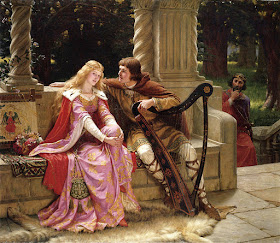The Story….
Christopher
'Kit' Tyburn is home from a brutal war against the Spanish in Flanders. He is
seeking a different life to the hell he lived before.
He becomes a
player for the Earl of Worcester's Men and instead of fighting in battle, he
now fights on a stage in front of an audience.
Due to the
plague that is terrorising
London, the Earl of Worcester's Men take to the road
and tour the market-towns of the Midlands.
In
Stratford-Upon-Avon, Tyburn comes to the aid of an eleven-year-old boy - William
Shakespeare – who is being menacingly threatened by some vile thugs. But by
helping the child, Tyburn accidentally intercepts a coded letter to a hidden
Jesuit priest. Such a letter can only bring death. There are many who want it
and if he is found with the letter in his possession then he will die a traitor’s
death. There is only one thing he can do - he has to find the Jesuit priest before it is too late.
What did I
think of the Story?
My favourite
poet and playwright, without a shadow-of-a-doubt, is Shakespeare. I love
reading interpretations about his life. Hamilton's description of Shakespeare
was just what I would imagine him to have been like as child - intelligent, but always in trouble! Likewise, his portrayal of
Stratford-Upon-Avon brought the town to life and, having been to Shakespeare
home, his description of the house was spot on. It was real pleasure to read.
I really
enjoyed the banter between the players. It reminded me of how the players act
in the movie Shakespeare in Love -
but instead of it being focused around a theater, the players are on 'tour.' The
language of the players is pretty crude, but that is how I would imagine they
would have spoken as well - they were all very believable. Hamilton must have
had great fun writing about them.
The story
itself was riveting. The plot was super engaging and there was always something
going on. The story starts with a murder and then the action is non-stop. There
was a great deal of mystery and intrigue, but there were many moments of humour
as well romance.
I thought
Hamilton portrayed life in Elizabethan England exceptionally well. He described the abject poverty and
the deprivation of the poor, as well as the riches of the nobility - he touched
upon one particular noble who was trying his very best to charm the Queen into
marrying him! I thought Hamilton also gave a very real account of what it must
have been like to be a Catholic during these troublesome times and he exposed
the risks they took to practice their faith.
I really liked
Tyburn. He is vividly portrayed and he is likable. Throughout the book I was on
tenterhooks fearing he was going to get caught, because I so did not want him to
die a traitors death.
There are many
twists and turns in this tale - the last thing you will be with this book is
bored!
Why don't you
check it out today and experience the adventure for yourself!
About the author...
 Dean Hamilton was born in Winnipeg, Manitoba. He spent the first half of his childhood chasing around the prairies and western Canada before relocating to Toronto, Ontario. He has three degrees (BA, MA & MBA), reads an unhealthy amount of history, works as a marketing professional by day and prowls the imaginary alleyways of the Elizabethan era in his off-hours. Much of his winter is spent hanging around hockey arenas and shouting at referees.
Dean Hamilton was born in Winnipeg, Manitoba. He spent the first half of his childhood chasing around the prairies and western Canada before relocating to Toronto, Ontario. He has three degrees (BA, MA & MBA), reads an unhealthy amount of history, works as a marketing professional by day and prowls the imaginary alleyways of the Elizabethan era in his off-hours. Much of his winter is spent hanging around hockey arenas and shouting at referees.He is married, with a son, a dog, four cats and a turtle named Tortuga. THE JESUIT LETTER is his first novel of a planned series THE TYBURN FOLIOS.
Web: www.tyburntree.blogspot.com
Twitter: @Tyburn__Tree
THE JESUIT LETTER is a Short-List nominee for the Historic Novel Society (HNS) 2016 Indie Award.
























